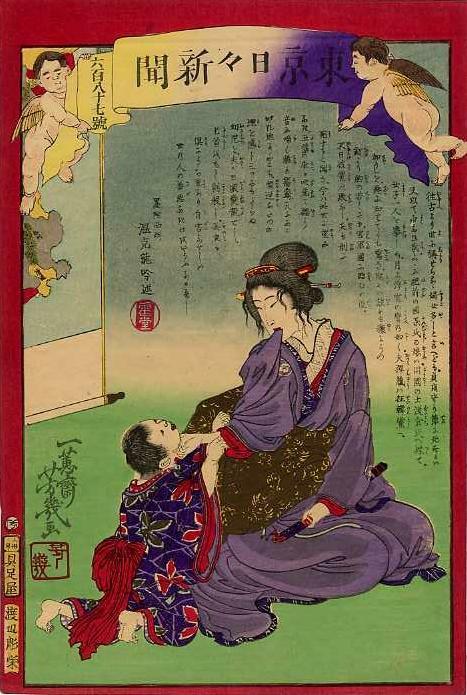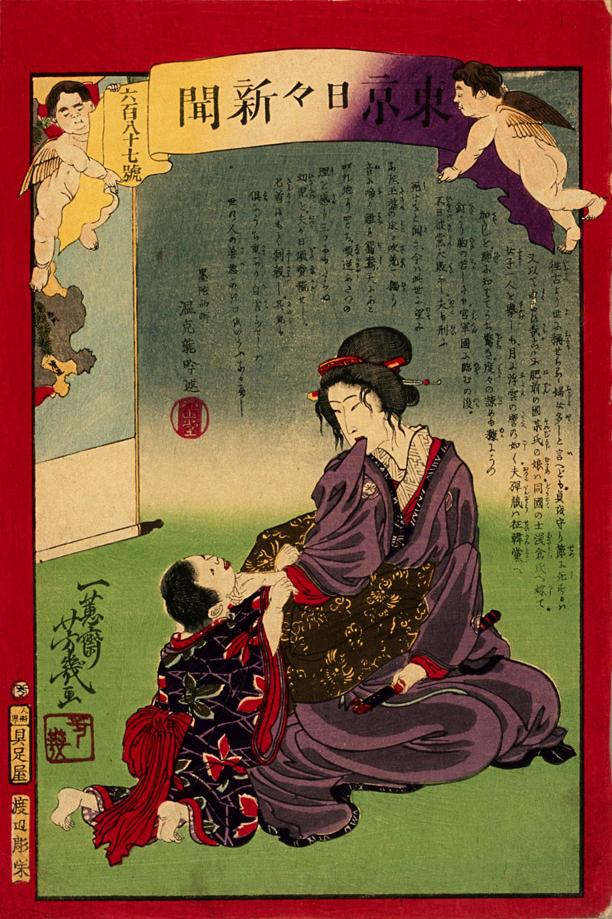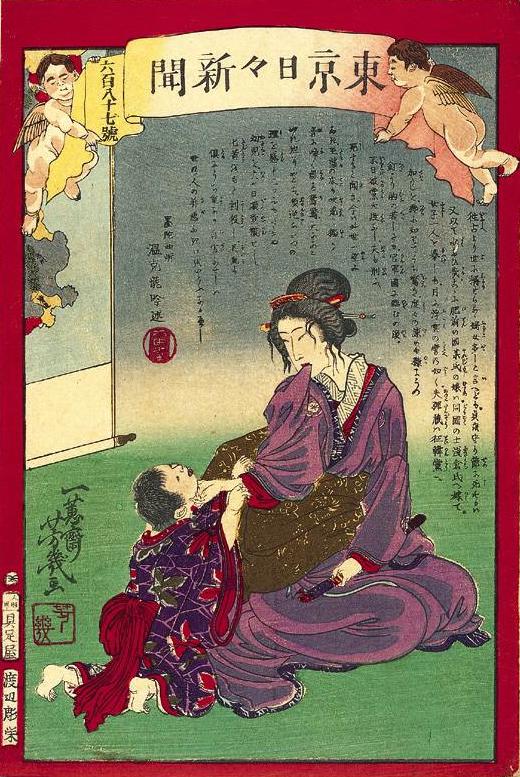
|
Gusokuya edition
Yellow publisher
Yellow carver
Yosha Bunko
|
|

|
Gusokuya edition
Yellow publisher
Yellow carver
Yosha Bunko
|
|

|
Gusokuya edition
White publisher
White carver
Hagi Uragami Museum
|
|
Tokyo nichinichi shinbun
No. 687
1874-5-14? (1874-10x)
Widow follows husband
Story in brief
The wife of a man from Hizen (now Nagasaki prefecture on Kyushu) killed her young son and herself after learning that her husband had been executed for rebellion. He had been a member of the Seikanto (Chastise Korea Party), one of several groups of dissidents who favored the argument to invade and annex Korea.
The argument was put before the government in 1873 by Saigo Takamori (1827-1877) of Satsuma, also on Kyushu. When it was dismissed as premature, Saigo, and sympathetic government leaders like Eto Shinpei (1834-1874) of Saga, also on Kyushu, quit their posts.
Saigo went back to Satsuma to plan his next move. Eto, the justice minister at the time he resigned, remained in Tokyo to support a movement to create an elected legislature. The following year, he returned to Saga, led a group of disenchanted former samurai against imperial forces, and lost. He fled but was arrested, quickly tried, found guilty, and exectuted. Three years later, Saigo himself rebelled, defeated, and committed seppuku.
It was not a time to be the wife of a political activist on the wrong side. Yoshiiku captures the poignancy of the widow's despair as she beholds the face of her son, who is about to join his father. (WW)
|